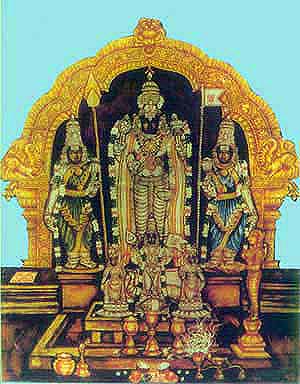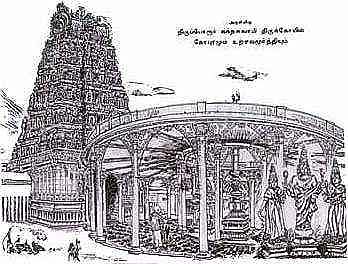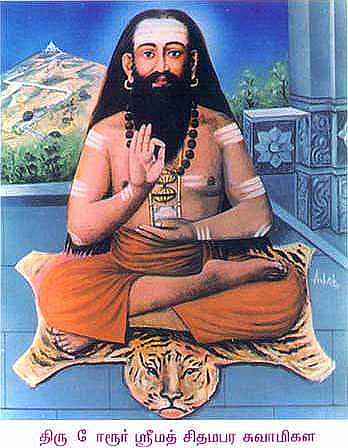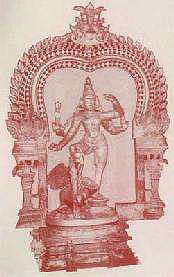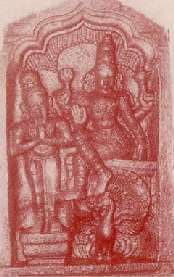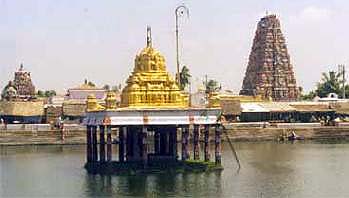
|
|||||||||||||||
|
| |||||||||||||||
Arulmigu Kanda Swami Kovil, Tirupporur
Tirupporur is an ancient temple dating back to the Pallava period and is one of 33 major temples in Tamil Nadu dedicated to the worship of Murugan. Tirupporur is situated 25 kilometres northeast of Chingleput and is connected by bus service with Chennai at a distance of 45 kilometres. Tirupporur is also known as Pōriyūr or Yuddhapuri or Samarapuri. It is said that after vanquishing Soorapadman at Tiruchendur, Skanda destroyed the rest of the demons here at Tiruppōrūr ('place of the sacred war') in aerial combat. SthalapurānamIn ancient times, Lord Vishnu and his consort Lakshmi were subjected to the curse of Kanva rishi. Lord Siva came to this place and liberated them from its effects. Therefore, Tirupporur temple is a very significant shrine dedicated to the worship of Lord Siva as well as his son Murugan. The sthalapurana discloses that at this place Murugan with his consorts Valli and Devayanai granted protection to devas and expounded the meaning of Pranava to Agastya Muni. According to legend, Skanda enunciated the principle of pranava or reality to the devas here. The very concept of Pranavam is said to have worshipped Skanda here, and the hill behind the temple is known as Pranava Malai. Legend also has it that Vishnu worshipped Shiva on the Pranava Hill. Legend also has it that Skanda worshipped Shiva as Vanmeekeswarar to rid himself of the sin of having killed Soorapadman. HistoryTirupporur Devasthanam preserves Pallava inscriptions from as early as the 10th century as well as from the period of Vikrama Chola of the 12th century CE. As evidenced from an inscription found on a stone pillar in this temple, one is inclined to infer that the temple must have been originally built in the reign of Pallavas because of the two birudus of atyantakama and adiranachandra ascribable Rajasimha (Narasimha Varma II). Tirupporur flourished in that age but disappeared into oblivion for some time. During the middle of the seventeenth century, however, Tirupporur was rediscovered and renovated by Chidambara Swamigal who is said to be a descendant of one of the poets of the Tamil Sangam of Madurai. This place was then a forest of palmyra trees. Lord Murugan as Swayambhu Murti lay covered up by an anthill. Chidambara Swamigal is said to have discovered the image of Skanda in the anthill, and then rebuilt the temple and reinstalled the image. The descendants of Chidambara Swamigal followed up the religious service and brought it to the present day fame. The sanctum sanctorum of this temple is situated on the eastern side wherein one can see the palmyra tree and the anthill under it wherein is Kanda Perumal with Valli and Devayanai on a small peetham. Chidambara Swamigal used to perform abhishekam to these images. The murti in the anthill is covered with kavacham and other jewels but no abhishekam is performed for this deity. This temple enshrines Skanda in several forms relating to legends from the Skanda Puranam. The foremost of these is the depiction of Skanda as a warrior, Samhāra Subramanyar. He is also enshrined in the form of a child, expounding the meaning of the oneness of creation Om to his father Shiva. Skanda is enshrined with his consorts Valli and Devasena in an east facing sanctum. No abhishekams are offered to these images. The 24 pillared hall and the 30 pillared circular hall are other features of this temple. There is a shrine to Vembadi Vinayakar under a neem tree. On the southern side of the temple there is Saravana Poigai and Valliyar Odai, the two sacred teerthams. On the eastern side of the teerthams, there is a mandapam of four pillars. There is also another teertham by name Pranavāmritam. FestivalsFour worship services are offered each day. Skanda Sasti is celebrated in the month of Aippasi. Other festivals celebrated here include Margazhi Tiruvadirai and Navaratri. LiteratureArunagirinatha has sung four Tiruppugazh psalms in praise of Lord Muruga at Tirupporur. Tirupporur Sannidhimurai, Tirupporur Purana, Kalambagam, Alamkara-Panchakam, and Pranavachala Satalam are some of the works relating to this temple by Purasai Ashtavadanam Sabhapati Mudaliar. Other noteworthy literary works relating to this temple are Tirupporur Kovali Tirupporur Anadadi and the songs of Ramalinga Vallalar and Pamban Swamigal. Tirupporur is considered as the head of the places wherein Lord Muruga willingly lives. Arunagirinatha goes to the extent of saying that all the four Vedas worship at Tirupporur. In the sanctum sanctorum one can have the darshan of swayambhu mūrti of Muruga in the form of a palmyra tree. Beneath the swayambhu mūrti in a small platform is the idol of Muruga in Brahmasasta from with the two consorts on both sides. It is said that the small idols were made by Chidambaram Swamigal for performing abhisheka and arādana. Brahmotsava during the Tamil month Maci and Skanda Sasti are some of the important festival conducted in this temple. When one circumambulates the inner prakara can have a glimpse of the exquisitely chiseled panchaloha idols of Vighneswara, Somāskanda, Chandrasekara, Dwanishandeswara, Astra Deva, Brahma, Vishu, Devendra Nandi and Matruchandesa. The copper icon of Lord Muruga sitting on the lap of Lord Siva in the posture of Shiva hearing pranava upadesha chiseled according to the details and descriptions found in Manasaram, a treatise on silpa sastra. The base relief of upadesa to Agastya, Vallikalyana and Agni-ganta Subrahmanya have been chiseled very beautifully on the pillars of Sarvavaidya Mandapa. The yantra established by Chidambaram Swamigal can be found in the northeast of the temple on a platform with kūrma, ashtagaja, astnaga and ganas. Daily pujas are performed to this yantra. In the outer mandapa is situated in the sannidhi of Teyvayanai. Text extracts courtesy of Vellayapettai Ra. Krishnan, IndianTemples.com and HinduBooks.org. |
